Exclusive online - Free leash in orders over 300€. Shop now!
<

Jet propulsion
Jet propulsion
The efoil revolution
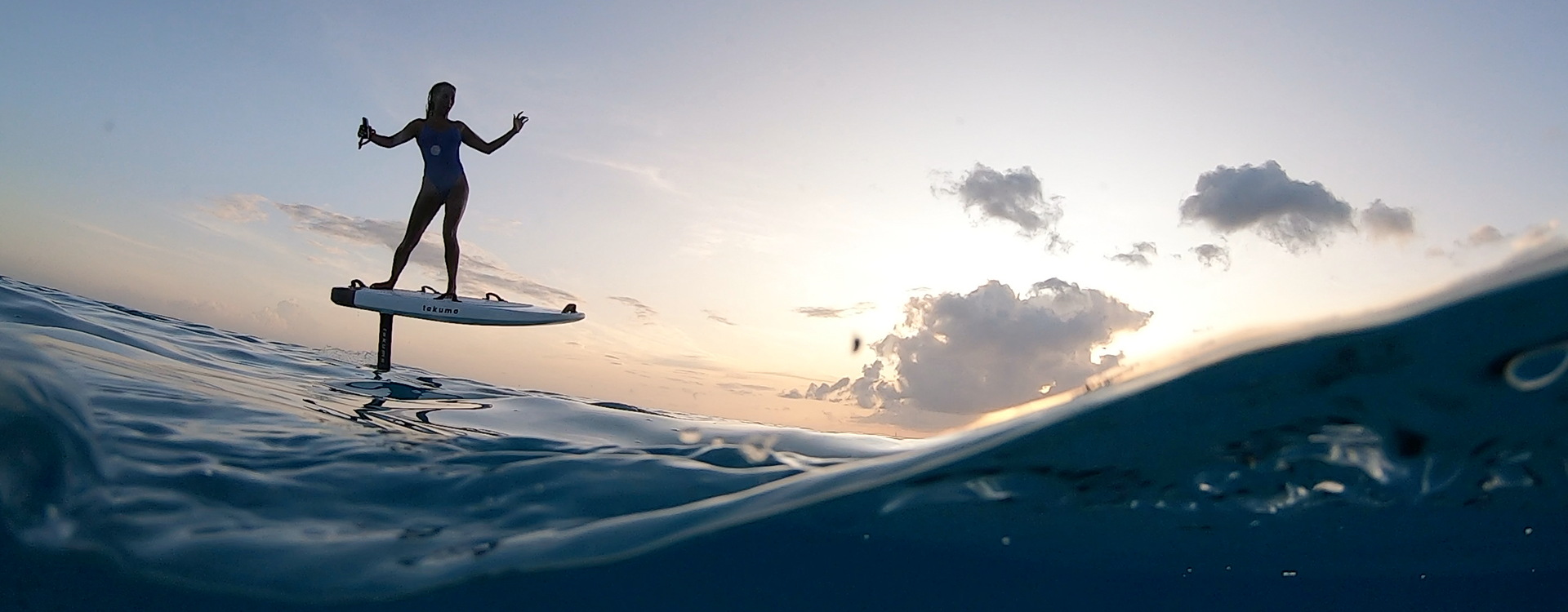
No matter if you are completely new to efoiling or already an extreme sports enthusiast you will get addicted to the exhilarating feeling of flying above water. Efoils, unlike jet skis, are quiet and not intrusive, unlike surfing, efoiling is not wholly dependent on the weather.
Five years ago, we set out to create a groundbreaking efoil. The Takuma jet propulsion is the culmination of years of R&D, resulting in the safest propulsion system, to make efoiling accessible to everyone.
Click here to see the jet propulsion in action
But let’s not get ahead of ourselves and first take a closer look at what an efoil and a jet propulsion is.
A standard electric hydrofoil or efoil works by attaching a powerful electric motor to a mast, wing and propulsion system, mounted beneath a high-performance board. The motor is connected to a speed control which in turn is connected to a battery and wirelessly via bluetooth to a remote control.
If you want to learn more about how a hydrofoil works click here.
Origins of the jet propulsion system
The origins of the jet engine date back to the first half of the 20th century right at the beginning of WWII, where it was first invented by Hans von Ohain in Germany and a few years later by Frank Whittle in the United Kingdom who then patented the invention, with the purpose of designing a more powerful and compact engine for an airplane.
If we look at the picture on the right we see that both the jet and propeller propulsion on airplanes work in a similar way.
Both propel the aircraft by thrusting a large weight of air backwards.
However, the jet engines started a revolution in the aviation industry, given that they are smaller and have an excellent power-to-weight ratio, meaning the amount of power you get out of the engine compared to the weight of the engines itself is extremely efficient.
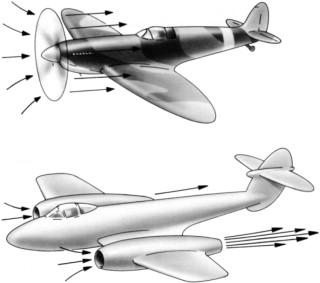
What is the difference between a propeller propulsion and a jet system?
There is one big difference between a jet propulsion and a propeller propulsion on a hydrofoil: the safety.
Both systems work based on a rotating set of blades accelerating the water and moving the craft forward. The water jet uses an impeller, a rotating set of blades inside a tube only big enough for them to spin freely, whereas the propeller operates in open water with exposed blades.
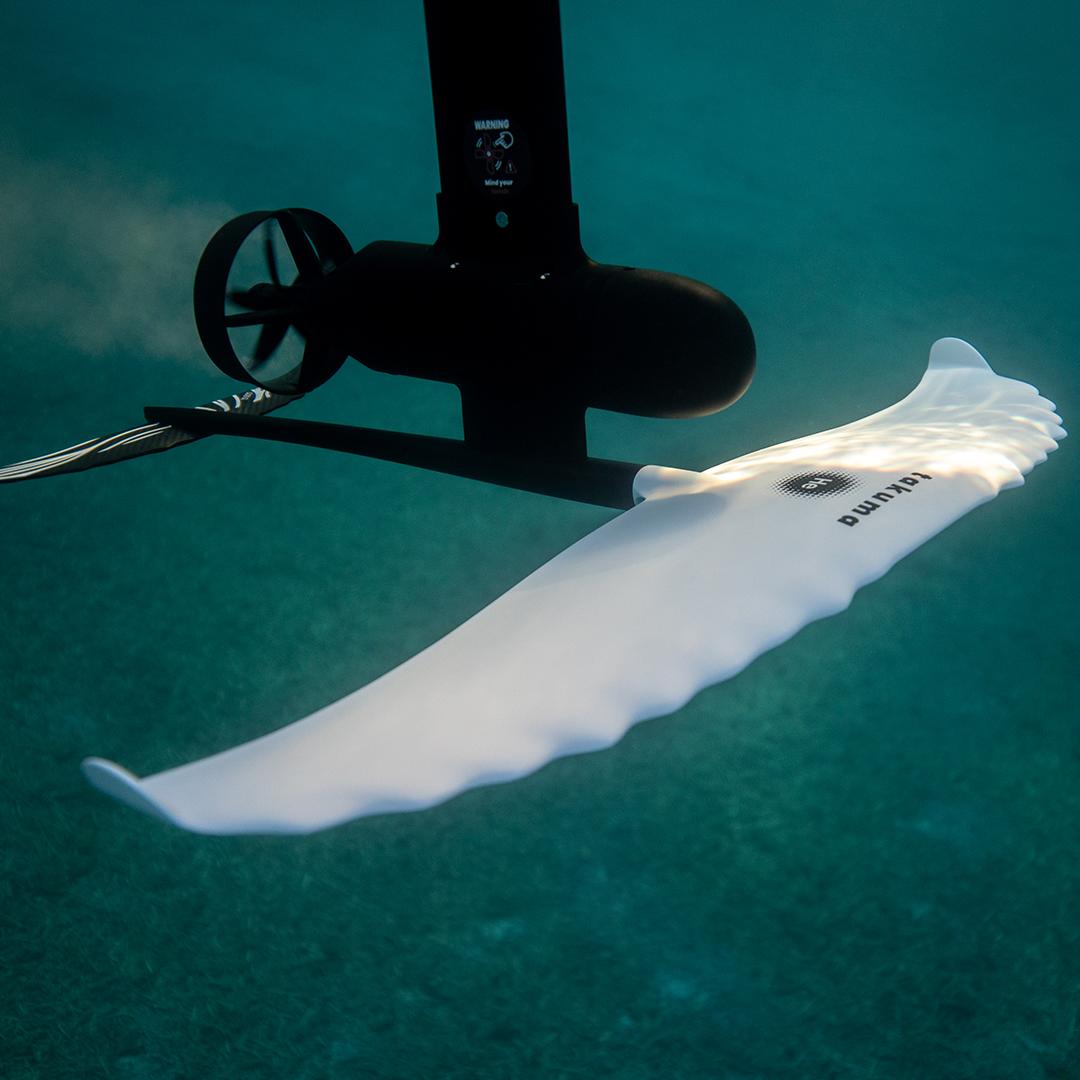 Propeller propulsion
Propeller propulsion
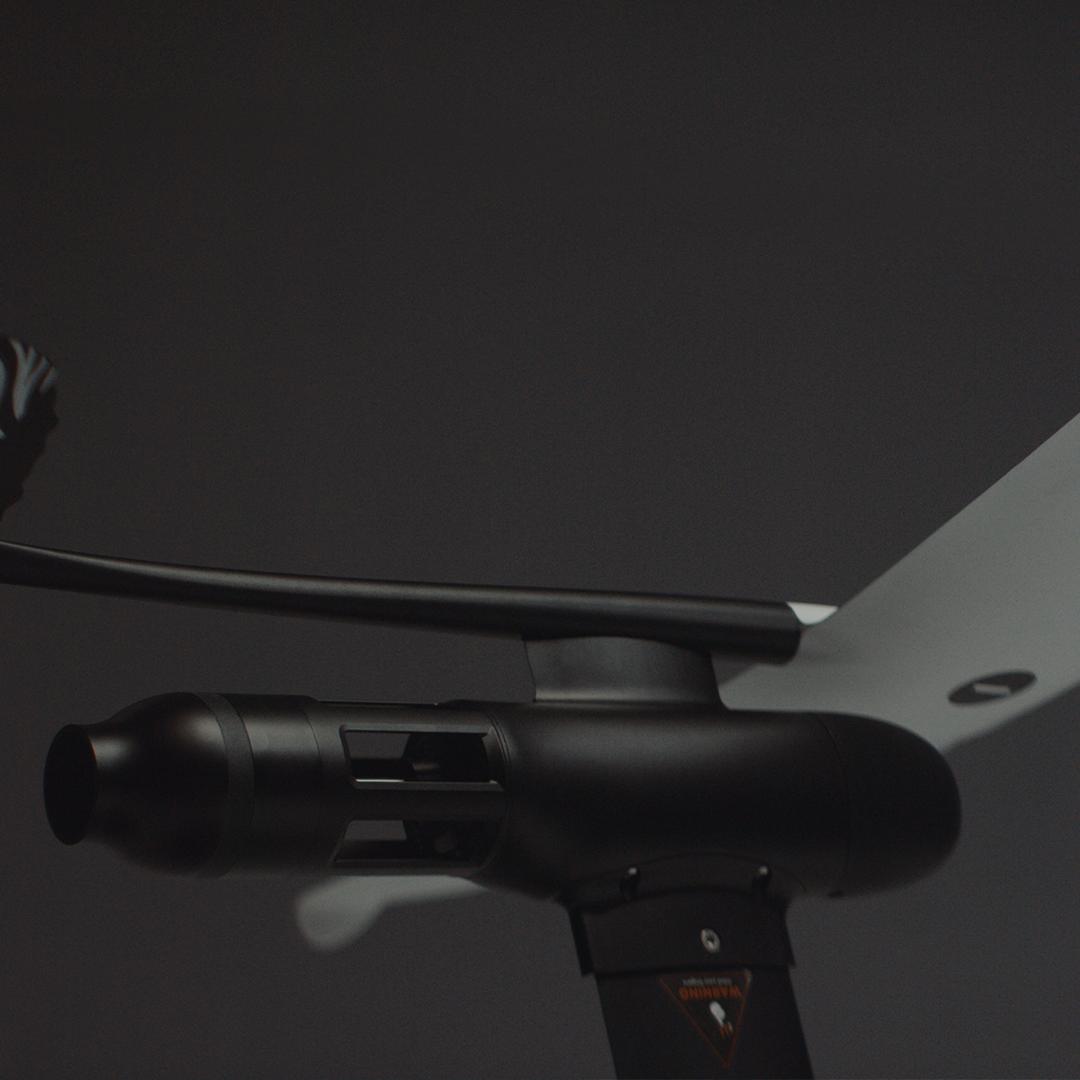
Once you hit your remote acceleration, the blades on your propeller propulsion start to turn rapidly and generate forward thrust, all while rotating exposed underneath the water.
The majority of efoils fitted with a propeller come with a protective nozzle placed around the blades to prevent injuries while out on the water.
However, this has been said to create extra drag and although protected by the nozzle, the propeller blades, especially when not used as recommended by the manufacturer, can still cause injury.
The jet propulsion is the perfect solution for preventing these types of injuries, since all the moving parts are safely contained within a tube.
With thinner and lighter components, the jet design eliminates drag and delivers an ultra smooth hydrodynamic performance, all while being completely safe to operate.
What makes the Takuma Efoil Jet special?
Efoiling allows you to spend more time on the water, move faster, access new spots and experience a unique sensation that is described as a blend of floating and flying.
The jet propulsion makes the sport safer, but it’s not just the new propulsion that make the Takuma efoils stand out from the rest. The innovative design of the board and its components make it accessible to everybody.
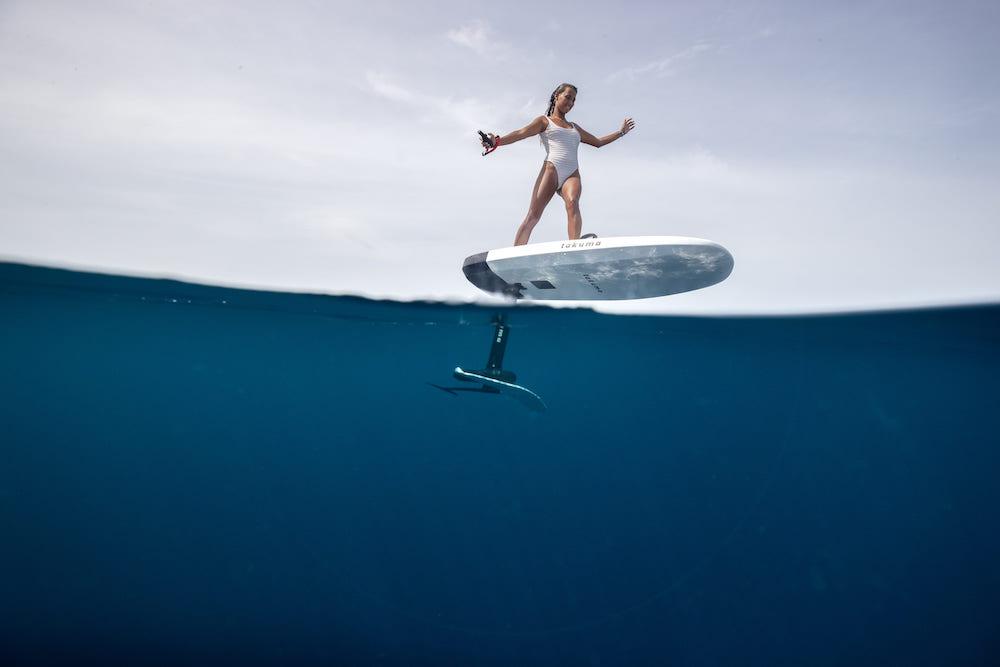
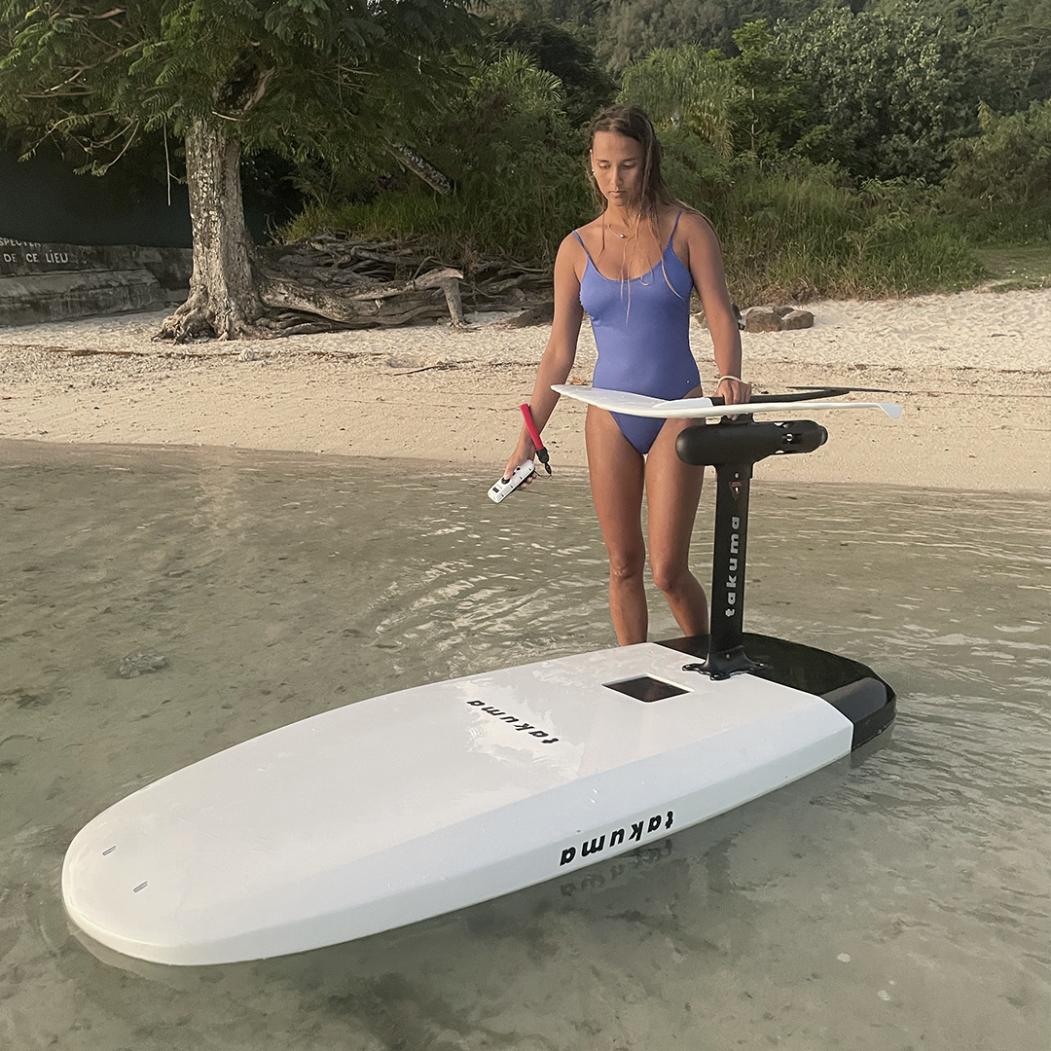
Especially in the beginning, going at high speeds can be intimidating, the majority of efoils available on the market need to reach high speeds before they are able to take off.
However, the Takuma Efoils are voluminous, stable and thanks to the unique shape and high performance of our foils, they allow for an early take off at low speeds, making the sport user friendly and really fun to practice from the get-go.
Related posts
-
 On an expedition to visit the humpback whales
Posted in: EFOIL07/26/20211967 viewsDiscover
On an expedition to visit the humpback whales
Posted in: EFOIL07/26/20211967 viewsDiscover -
 Wingfoiling Teahupoo
Posted in: EFOIL07/02/20212106 viewsDiscover
Wingfoiling Teahupoo
Posted in: EFOIL07/02/20212106 viewsDiscover -
 Aimee Fuller on the Thames
Posted in: EFOIL06/29/20211729 viewsDiscover
Aimee Fuller on the Thames
Posted in: EFOIL06/29/20211729 viewsDiscover -
 Behind the scenes of Tahiti
Posted in: EFOIL06/11/20212283 viewsDiscover
Behind the scenes of Tahiti
Posted in: EFOIL06/11/20212283 viewsDiscover -
 Versatile, stable and easy to handle
Posted in: EFOIL05/31/20211837 viewsDiscover
Versatile, stable and easy to handle
Posted in: EFOIL05/31/20211837 viewsDiscover



